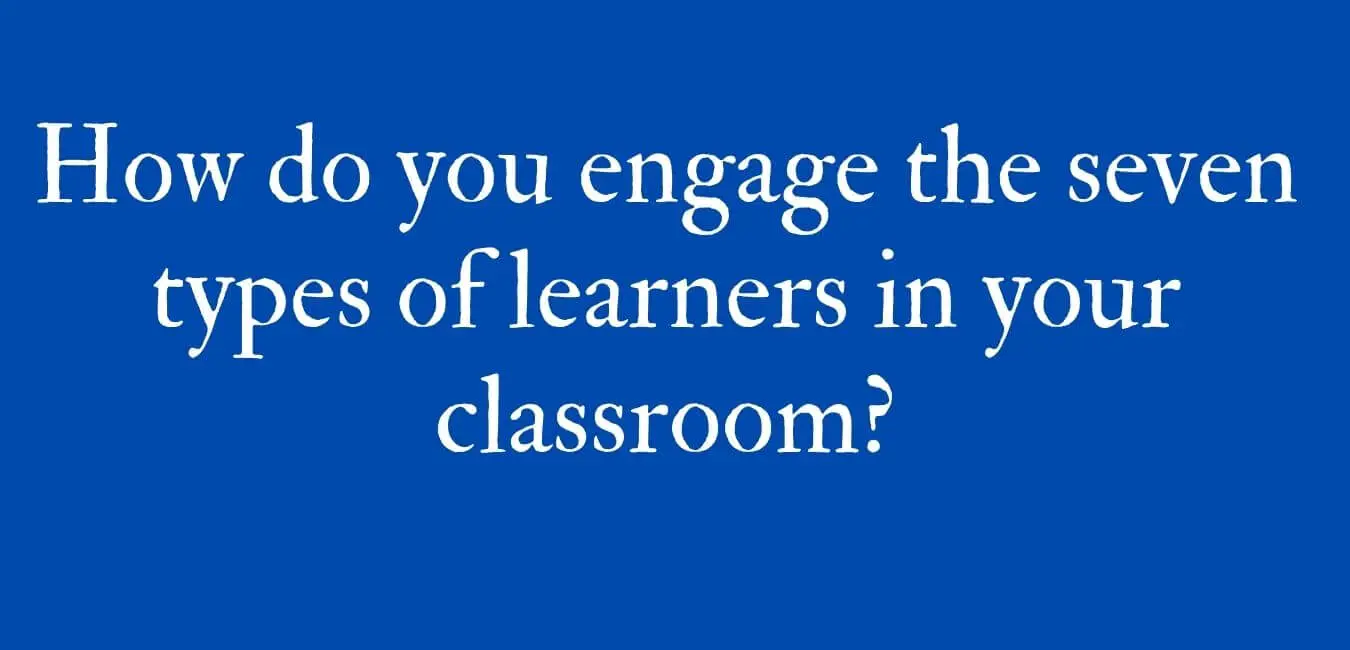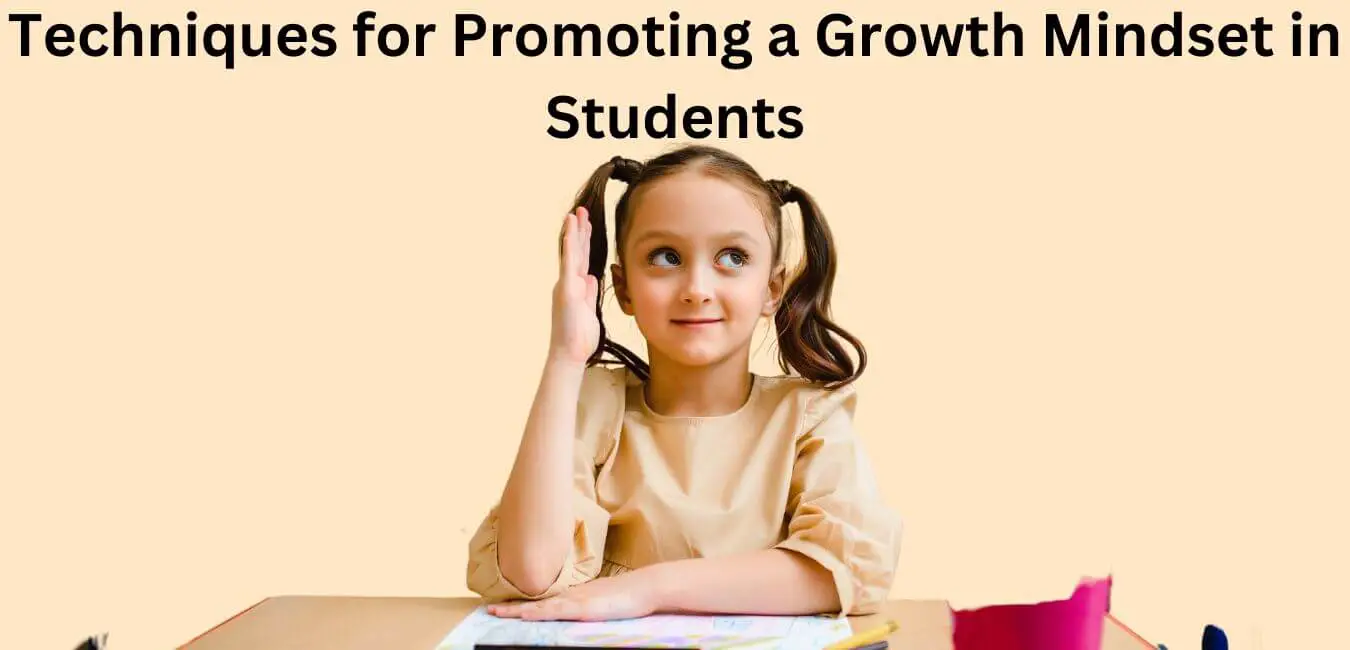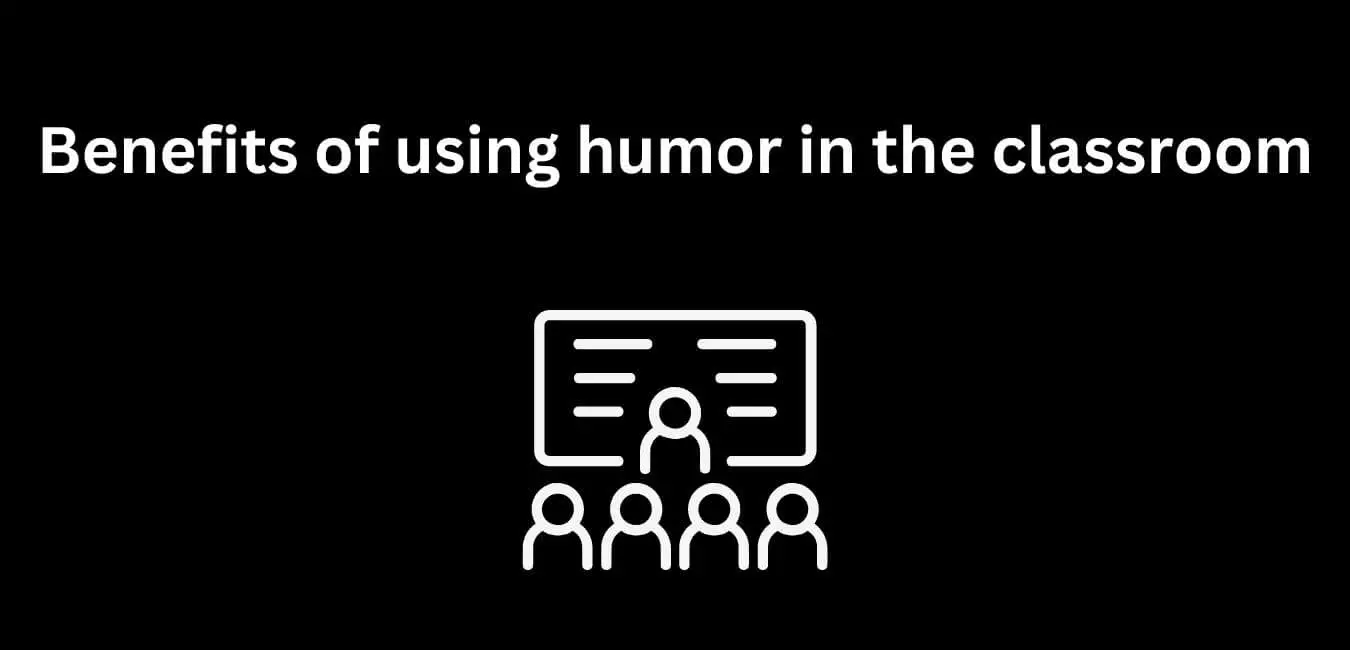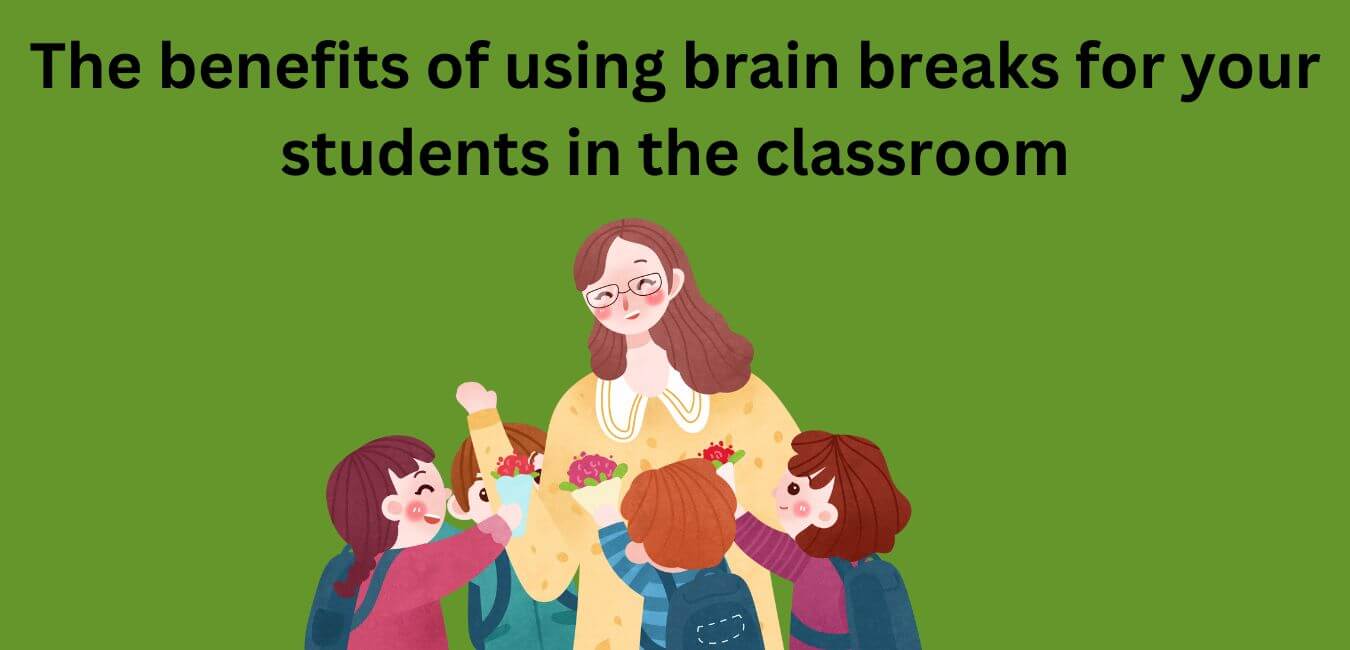There are many ways to engage different types of learners in a classroom setting. Some teachers choose to approach the different types of learners in a way that is tailored to their specific strengths and weaknesses. Other teachers choose a more general approach that allows for more flexibility in how the class is taught. Regardless of how the different types of learners are engaged, there are some key principles that should be followed. First, it is important to understand what makes each type of learner unique.
In this post, I will explore the seven types of learners and suggest strategies to help you engage them in your classroom.
What Are the Seven Types of Learners in the Classroom?
There are seven different types of learners in any given classroom: visual, auditory, kinesthetic, logical, social, solitary, and emotional. To engage all of these learners in a way that is meaningful and relevant to them, it is important to vary your teaching methods and activities. For example, you might use a mix of lectures, discussions, group work, individual assignments, and hands-on activities. You can also vary the pace of your class to accommodate different learners.
What Activities Can Be Used to Engage the Different Types of Learners in the Classroom?
Below are some of the ways you can engage the seven types of learners in your classroom:
Kinesthetic Learners: How do you engage kinesthetic learners?
Kinesthetic learners are individuals who learn best through experiencing the material firsthand. This type of learner is often affected by their environment and reacts more deeply to stimuli that come from within themselves. In order to engage kinesthetic learners, it is important to understand how they learn and what strategies work best for them. Here are some tips for engaging kinesthetic learners in your classroom:
1. Make sure the materials you use are interactive and engaging. Kinesthetic learners benefit from materials that are hands-on and allow them to explore on their own. These types of materials also make learning more fun!
2. Encourage movement throughout the class period. Movement not only helps keep kinesthetic learners engaged but also improves their focus and concentration. If possible, try to incorporate physical activities into every lesson plan.
3. Use a variety of learning strategies. Kinesthetic learners often respond best to a variety of approaches such as discussion, problem-solving, and hands-on activities.
4. Use inquiry-based teaching techniques to engage kinesthetic learners. It is important to keep in mind that not all kinesthetic learners will respond to the same teaching techniques. It is important to find out what works best for each student individually.
5. Use effective classroom management techniques. Kinesthetic learners often have difficulty waiting their turn, sitting still, and following directions. It is important to keep these students moving and engaged by using a variety of teaching techniques.
6. Use a variety of materials to meet the needs of kinesthetic learners.
7. Recognize that kinesthetic learners may need to be taught in different ways than visual learners. Kinesthetic learners will often need to be taught differently than their visual peers due to the way they learn best.
8. Give kinesthetic learners the space they need to think and explore.
9. Be aware that kinesthetic learners need time to learn concepts and ideas before they can be taught in a traditional classroom setting.
10. Assess each student’s learning style, strengths, and needs on an individual basis.
Visual Learners: How do you engage visual learners?
Visual learners are typically more engaged with information when it is visually presented. When visualizing concepts, they are better able to retain information. This can be a challenge for instructors who need to engage visual learners in class. Here are some strategies for engaging visual learners:
1) Use visuals to help explain concepts.
Use visual aids and diagrams to help explain complex concepts. Visual aids can help break down complex material into manageable chunks, making it easier for visual learners to understand. Diagrams can also be helpful in illustrating relationships between different concepts. For example, you can use an image or video to illustrate the relationship between state and federal governments.
2) Create visuals that support learning objectives.
Develop visuals that support the learning objectives of a particular lesson. For example, if your objective is to teach students how to use a computer to create an image, you can use an image that shows how to do this. Create visuals specific to the lesson requirements.
3) Use visuals to engage students in discussions and debates.
Use visuals to engage in discussions and debates about issues that are relevant to the course. For example, you can create a video to trigger discussions and debates about the topic under consideration. Support student learning with visuals and provide them with an opportunity to reflect on the material they have just learned.
4) Use visuals as tools for assessment.
Use visuals as tools for assessing students’ understanding of the material. For example, you can use a video to assess students’ understanding of a topic by asking them to answer questions about it. Also, use visuals as tools for feedback.
5) Create infographics and charts to illustrate data.
Create infographics and charts to illustrate data. For example, you can create an infographic that summarizes important concepts that students should remember from a lesson. You can also create a chart that illustrates the relationship between different aspects of a topic or issues in a subject.
6) Use images, videos, and animations to spice up your lectures and presentations.
Use images and videos to illustrate points that you want students to remember. For example, if you want them to understand the importance of using a specific word in a sentence, show them an image of that word on a poster or in a video. During a lesson, use visuals as tools to help students understand.
7) Integrate multimedia into your interactive learning activities.
Integrate videos, photos, and audio into online lessons. Use the power of multimedia to build student engagement. Enhance student understanding by integrating video-based lectures into your classroom.
Auditory Learners: How do you engage auditory learners?
What are auditory learners? Auditory learners are students who primarily learn and understand information through auditory means, such as hearing, listening, and speaking. This makes them different from visual learners, who learn and understand information primarily through the use of images.
Different schools have different strategies for engaging auditory learners in the classroom. Some educators believe that all students should participate in all class activities, regardless of whether they are visual or auditory learners. Others believe that teachers should focus their efforts on engaging specific groups of students, such as those with low reading skills or those who struggle with math concepts. In any case, there are several strategies that teachers can use to engage auditory learners in their classes.
1) Utilize resources that are specifically designed for auditory learners, such as audio recordings or articles read aloud. These materials can help engage students in the material being learned, increase their comprehension, and build confidence in their ability to learn new information through auditory means.
2) Use the visual to complement and support the auditory. For example, let students read their work aloud so that they can hear what they are saying.
3) Communicate with auditory learners in a way that requires them to listen and respond.
4) In environments that are noisy, or where there are many people talking at once, the auditory learner will have a hard time learning. In these situations, auditory learners become especially frustrated.
5) Use auditory learners’ favorite media. As a teacher, you should integrate music into your lessons.
6) Make sure students are not being distracted by other sounds.
7) Use songs with lyrics and rhymes to get students engaged in the classroom.
8. Establish clear expectations for how the class will be conducted. Make sure that all students are aware of the expectations for participation and engagement, and be prepared to enforce these rules if necessary. This will help ensure that all students feel comfortable participating in and learning from the class experience.
Logical Learners: How do you engage logical learners?
Logical learners are students who can process information logically and efficiently. This means that they can understand complex ideas quickly and learn new material easily. Engaging these students in your classroom can be difficult, but there are several strategies you can use to help.
1. Give them plenty of opportunities to practice their skills. Encourage logical learners to use their skills in a class by giving them opportunities to present their ideas, answer questions, or debate topics. This will help them build confidence and proficiency in the subject matter.
2. Be clear about expectations. Make sure you are clear about what is expected from logical learners and ensure that all classmates are on the same page. This will help them feel comfortable participating in class discussions and learning new material.
3. Make the class challenging but fair. Help logical learners stay engaged by making the class challenging but fair. This could be done by giving them a chance to answer questions before class or having everyone do a take-home assignment.
4. Encourage logical learners to ask questions. Make sure that logical learners know how to ask for help with the material. By asking them questions and getting them to explain what they don’t know, you can give them an opportunity to learn.
5. Empower logical learners by letting them try out new activities and projects. Logical learners are often hesitant to try new activities and projects because they don t want to make mistakes. Encourage logical learners to try out new activities and projects so that they will feel more confident about their learning.
6. Make sure that the logic of the lesson makes sense for all students. Students don t learn the same way, so it is important to make sure that the lesson material makes sense for each student and that all students have an equal opportunity to learn. If a student is not understanding something, they may need additional help.
7. Create a fun environment. Students learn best when they are having fun, so make sure that the lesson involves activities that are enjoyable for all students. They may not be able to fully understand everything in the lesson if it is not interesting enough or too difficult for them.
Solitary Learners: How do you engage solitary learners?
Solitary learners are a common sight in classrooms. They can be difficult to engage, but there are ways to get them involved in the classroom. Here are some tips for engaging solitary learners:
1. Be aware of their individual needs and preferences.
Solitary learners are independent learners and are mostly more introverted. They always prefer to learn on their own and alone. If you are aware of their needs and preferences, you can adapt your teaching style to them.
2. Make your classroom environment welcoming and comfortable.
Make your classroom a welcoming and comfortable place for solitary learners to thrive. Solitary learners are more likely to thrive in a quiet, comfortable, and pleasant environment. Also, make sure that your classroom is easily accessible for them. Ensure safety. Solitary learners are highly sensitive to the environment around them and might become extremely anxious if they feel vulnerable.
3. Offer incentives for participation, such as prizes or privileges. Students who are rewarded for participation are more likely to participate.
4. Encourage group participation by setting up opportunities for collaboration and sharing resources.
5. Involve the student in the planning of the class sessions, so they know what to expect and feel ownership of the learning process.
6. Respect their privacy and allow them space to work on their own if needed.
7. Recognize and celebrate their successes – it will motivate them to continue trying new things.
8. These students are thinkers, so provide opportunities for them to use that ability in the classroom. This will help them engage with the materials and the content.
9. Encourage solitary learners to plan and make goals regarding the attainment of learning objectives.
10. Encourage journaling and logging for your solitary learners.
Social/emotional Learners: How do you engage social/emotional learners?
When educators think about social learners, they often think about students who thrive in situations where there is a lot of interaction. Students who are social learners are generally good at interacting with others and are usually good at picking up new information. As a result, engaging these students can be a challenge for teachers. Here are some strategies to help you engage social learners in your classroom:
1. Make sure your classroom environment is conducive to learning. This includes providing enough seating and materials that are interesting and relevant and affording students the opportunity to ask questions.
2. Encourage active participation by using hands-on activities and projects that require students to use their creativity and interact with others.
3. Use group work as an opportunity to provide opportunities for students to share their ideas and experiences with others.
4. Encourage students to ask questions and talk about what they are learning with their peers and the teacher.
5. Make your expectations clear in advance of the lesson, so that you can address behaviors that may cause disruptions or interruptions during class.
What are social learners? Simply put, social learners are students who love to learn and explore new things. They often have a knack for absorbing information quickly and can be quite inquisitive. In order to engage social learners in your classroom, you’ll need to find ways to engage their interests and spark their curiosity. Here are some strategies to help you do just that:
1. Give them opportunities to share their thoughts and ideas. Encourage social learners to share what they know by asking them questions or giving them the opportunity to speak up in class. This will give you an idea of what they’re interested in and help you better understand the material.
2. Make learning fun. Social learners thrive when learning is enjoyable, so make sure all of your materials are visually appealing as well as informative. This will motivate them to want to learn more and help them feel more confident in their ability to understand the material.
3. Make learning engaging. Social learners can get bored easily, so try to keep your lessons exciting and varied with activities that are fun, fast-paced, and interactive.
4. Keep it simple. Social learners can pick up on too many details and information, so keep your lessons as simple as possible and make sure they’re always focused on the main point of a topic.
5. Make learning memorable. Social learners really want to remember the information you are giving them, so keep your lessons as interesting as possible.
6. Provide plenty of examples. Social learners want to see how things work, and you’ll find that they do better when you stick to real-life examples in your lessons.
Verbal Learners: How to Engage Verbal Learners?
Verbal learners are students who primarily learn through spoken words. As a result, it can be challenging for them to engage in classroom activities that rely primarily on written language.
One way to engage verbal learners is to create a classroom that is comfortable and conducive to learning. Make sure the classroom has ample seating, organized displays, and plenty of materials for hands-on activities.
Additionally, be patient with verbal learners; don’t expect them to learn in the traditional way. Instead, work with them one-on-one or in small groups, providing encouragement and assistance along the way.
Here are some strategies to help engage verbal learners:
1) Provide opportunities for interactive discussion. This will allow students to practice speaking openly and solve problems collaboratively.
2) Provide opportunities for oral presentations. This allows students to practice speaking, listening, and thinking skills in a collaborative and organized way.
3) Generate lively debate. This will allow verbal learners to express their opinions and develop critical thinking skills.
4) Provide opportunities for creative expression. This will allow students to develop their personal ideas and talents.
5) Provide opportunities for artistic expression. This will allow students to express themselves creatively and use their imagination.
6) Provide opportunities for physical or emotional expression. This will allow students to release stress and emotions in a safe environment.
Conclusion
In conclusion, I believe that the strategies recommended in this article will help you engage the different types of learners in your classroom. I also believe that these strategies will help you create a more dynamic, interactive, and engaging class. I hope that my ideas are helpful to you.
















